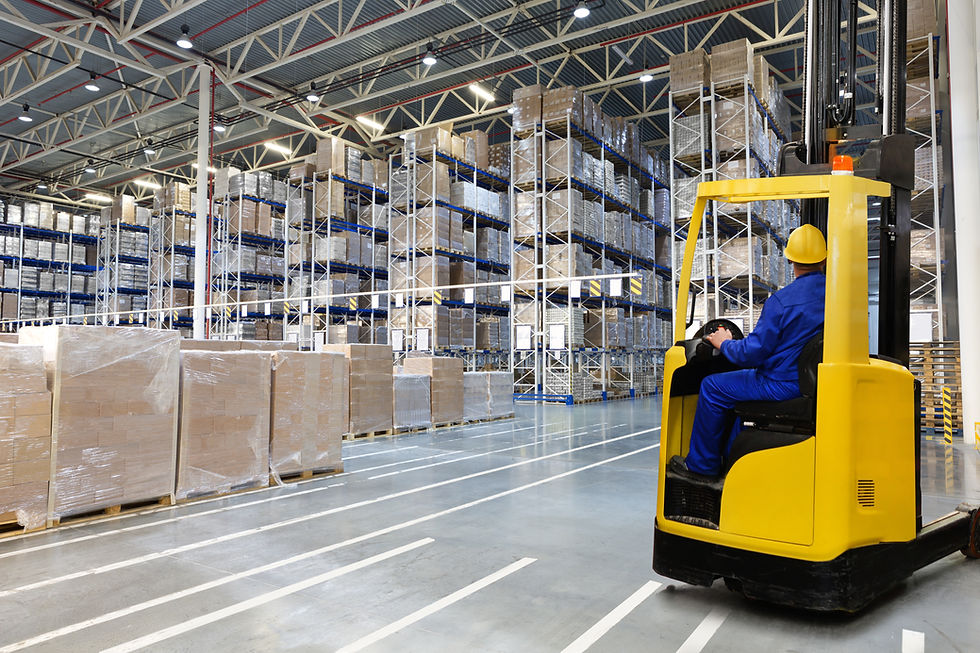Part 5: Transforming Logistics: Unleashing Generative AI in Warehousing, Distribution, and Transportation
- Arash Ateshkadi
- May 31, 2024
- 3 min read

In the fast-evolving landscape of logistics and supply chain management, Generative AI (GenAI) is emerging as a transformative technology. By optimizing warehousing, distribution, and transportation, GenAI enhances efficiency, reduces costs, and improves overall operational effectiveness. In this blog post, we will explore how GenAI is revolutionizing these critical areas and highlight some of the commercial tools that leverage this cutting-edge technology.
The Role of Generative AI in Warehousing, Distribution, and Transportation
Generative AI refers to AI systems capable of generating new content and solutions based on learned data. In the context of logistics, GenAI can significantly enhance operations in warehousing, distribution, and transportation through:
Warehousing
Inventory Optimization: GenAI can predict demand patterns, optimize stock levels, and reduce excess inventory, ensuring products are available when needed without overstocking.
Automated Picking and Packing: AI-driven robots and systems can efficiently pick and pack items, reducing human error and increasing throughput.
Space Utilization: GenAI can design optimal warehouse layouts and storage solutions, maximizing space utilization and improving workflow efficiency.
Distribution
Route Optimization: GenAI algorithms can determine the most efficient distribution routes, considering traffic, weather, and delivery windows, leading to faster and more cost-effective deliveries.
Demand Forecasting: Accurate demand predictions help in planning distribution strategies, ensuring products are delivered on time and in the right quantities.
Dynamic Scheduling: AI can dynamically adjust distribution schedules in response to real-time data, such as new orders or unexpected delays, ensuring efficient distribution.
Transportation
Fleet Management: GenAI can optimize fleet usage, reducing fuel consumption, maintenance costs, and overall operational expenses.
Predictive Maintenance: AI can predict vehicle maintenance needs, preventing breakdowns and reducing downtime.
Load Optimization: GenAI can optimize load planning, ensuring that trucks and containers are filled to capacity, minimizing trips and reducing costs.
Commercial Tools Utilizing Generative AI
Several commercial tools are harnessing GenAI to enhance warehousing, distribution, and transportation. Here are some notable examples:
1. Locus Robotics
Locus Robotics uses GenAI to:
Automate picking and packing processes in warehouses with robots that work alongside human workers.
Optimize inventory management and warehouse operations, improving efficiency and accuracy.
2. ClearMetal
ClearMetal leverages GenAI for:
Enhanced visibility and predictive insights across the supply chain.
Optimizing inventory levels and improving demand forecasting for better distribution planning.
Providing real-time updates and dynamic adjustments to distribution strategies.
3. FourKites
FourKites uses GenAI to:
Offer real-time tracking and predictive analytics for transportation and logistics.
Optimize routes and provide dynamic scheduling based on real-time data.
Enhance customer communication with accurate delivery estimates and updates.
4. SAP Extended Warehouse Management (EWM)
SAP EWM integrates GenAI to:
Optimize warehouse layout and space utilization.
Improve inventory accuracy and reduce carrying costs through predictive analytics.
Enhance picking, packing, and shipping processes with AI-driven automation.
5. Descartes Systems Group
Descartes employs GenAI to:
Provide advanced route planning and optimization for transportation.
Enhance fleet management with predictive maintenance and real-time tracking.
Optimize load planning and distribution strategies for maximum efficiency.
The Future of Logistics with Generative AI
The integration of Generative AI in warehousing, distribution, and transportation is still evolving, but its potential is vast. As technology advances, we can anticipate:
Increased Automation: AI-driven robots and systems will handle more complex tasks, further reducing the need for manual labor and increasing efficiency.
Enhanced Predictive Capabilities: Improved demand forecasting and predictive maintenance will lead to more proactive and efficient operations.
Sustainability: Optimized routes, load planning, and inventory management will reduce waste and carbon emissions, contributing to more sustainable logistics practices.
Improved Customer Experiences: Enhanced accuracy and reliability in delivery times will lead to higher customer satisfaction and loyalty.
Conclusion
Generative AI is revolutionizing warehousing, distribution, and transportation by enhancing efficiency, accuracy, and operational effectiveness. The commercial tools available today are just the beginning, signaling a future where logistics processes are smarter, more agile, and highly optimized. Embracing GenAI in logistics is no longer an option but a necessity for companies aiming to stay competitive in the rapidly changing landscape of supply chain management.
By leveraging the power of Generative AI, organizations can not only optimize their current operations but also pave the way for innovative solutions that will shape the future of logistics and supply chain management.




Comments